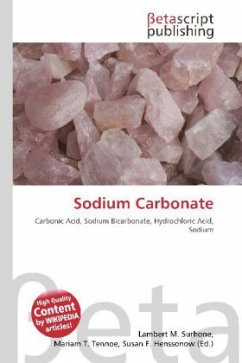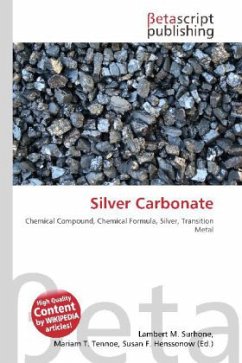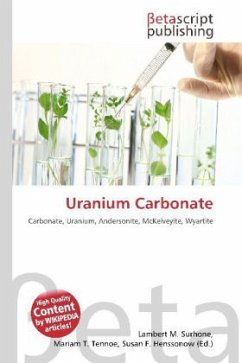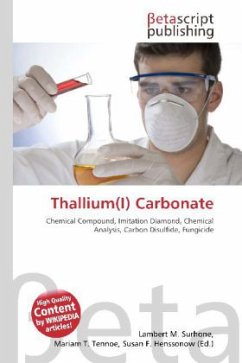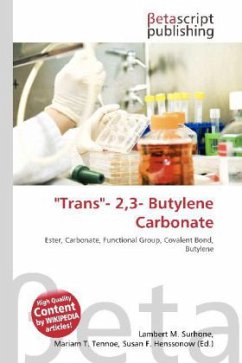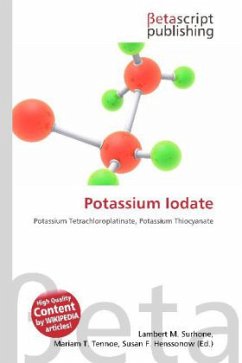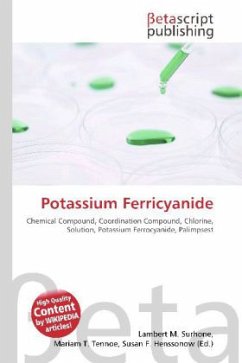
Potassium Carbonate
Versandkostenfrei!
Versandfertig in 6-10 Tagen
32,99 €
inkl. MwSt.

PAYBACK Punkte
16 °P sammeln!
Please note that the content of this book primarily consists of articles available from Wikipedia or other free sources online. Potassium carbonate (K2CO3) is a white salt, soluble in water (insoluble in alcohol), which forms a strongly alkaline solution. It can be made as the product of potassium hydroxide''s absorbent reaction with carbon dioxide. It is deliquescent, often appearing a damp or wet solid. Potassium carbonate is used in the production of soap and glass. Potassium carbonate was first identified in 1742 by Antonio Campanella and is the primary component of potash and the more ref...
Please note that the content of this book primarily consists of articles available from Wikipedia or other free sources online. Potassium carbonate (K2CO3) is a white salt, soluble in water (insoluble in alcohol), which forms a strongly alkaline solution. It can be made as the product of potassium hydroxide''s absorbent reaction with carbon dioxide. It is deliquescent, often appearing a damp or wet solid. Potassium carbonate is used in the production of soap and glass. Potassium carbonate was first identified in 1742 by Antonio Campanella and is the primary component of potash and the more refined pearlash or salts of tartar. Historically pearlash was created by baking potash in a kiln to remove impurities. The fine white powder remaining was the pearlash. The first patent issued by the U.S. Patent Office was awarded to Samuel Hopkins in 1790 for an improved method of making potash and pearlash.



